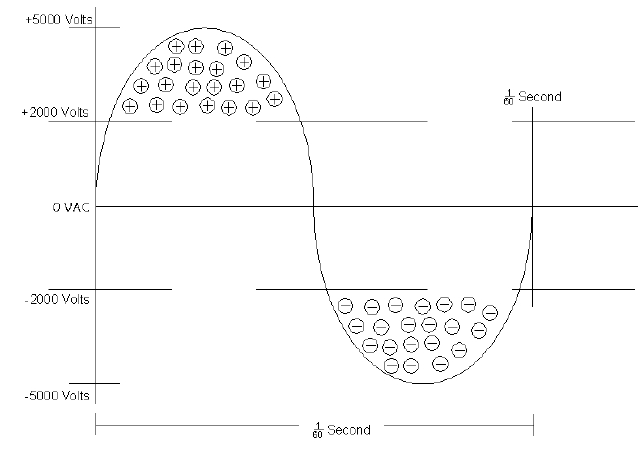Ionization Info
Each air knife has an ionization bar mounted parallel to the air stream. The purpose of the ionization system is to reduce or eliminate any static charge from contaminants and surface to be cleaned. The ionization system is an AC system which produces both positive and negative ions (IONS ARE CHARGED AIR MOLECULES) that will eliminate either positive or negative charges within a fraction of a second. The ionization process works by placing a high voltage potential at an electrode, or needle tip, with a sharp point. This point becomes the least path of resistance to discharge. This ionic discharge will ionize the air around the needle tip. Due to the high potential, the air is pushed away from the needle tip as it is ionized by the corona wind. This stream of ionized air is directed into the nozzle’s air stream which transports it to the surface to be neutralized. The AC voltage produces both positive and negative ions at a rate of sixty times per second due to the 60Hz line frequency. During the first half of the cycle as the potential exceeds 2000V, a discharge begins and positive ions are generated until the potential falls below the 2000V level. During the second half of the cycle it is the same process but negative ions are generated. During the time when potential falls below 2000V no ions are being generated and this produces a gap between the positive and negative ions. SEE FIG. 1.
Fig. 1 Ionization Cycle
Ionization Bar Alignment
Ionization Bar alignment is critical to the proper functioning of pre-paint finishing equipment. Alignment is slightly different for Blowoff Machines and Tackoff Machines. On a Blowoff the ionization bar needle tips should be pointing perpendicular to the airstream of the nozzle or air knife. The air flow from the nozzle or air knife should pass across the needle tips upstream at approximately a 45 degree angle to the surface being cleaned. See Fig. 2.
Fig. 2 Ionization Alignment - Blowoff
Ionization alignment on a Tackoff Machine is a little different. The ions need to hit the feathers and the job surface. So the air stream needs to be aligned to hit both of them. See fig. 3
Fig. 3 Ionization Alignment - Tackoff





